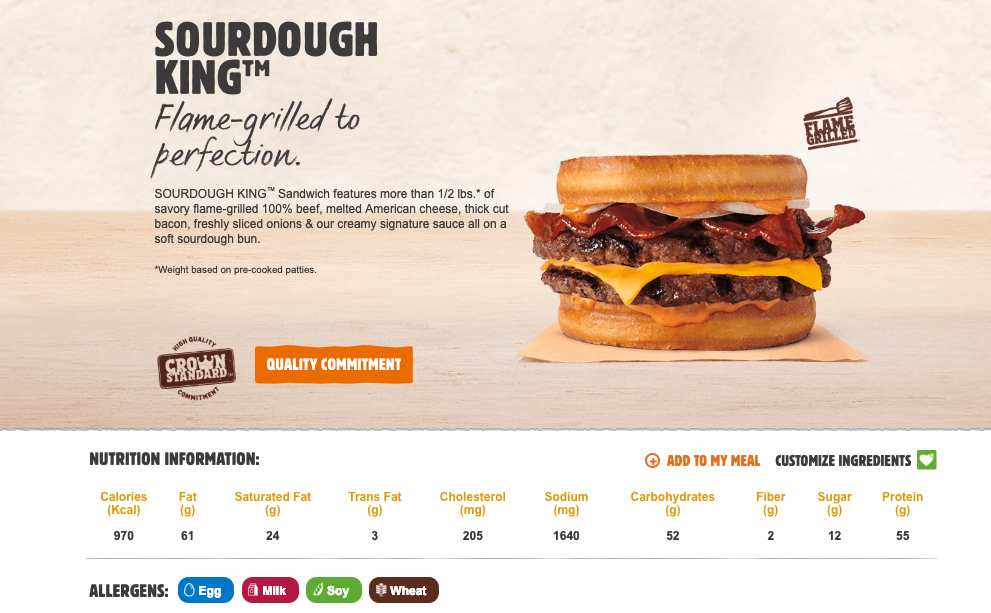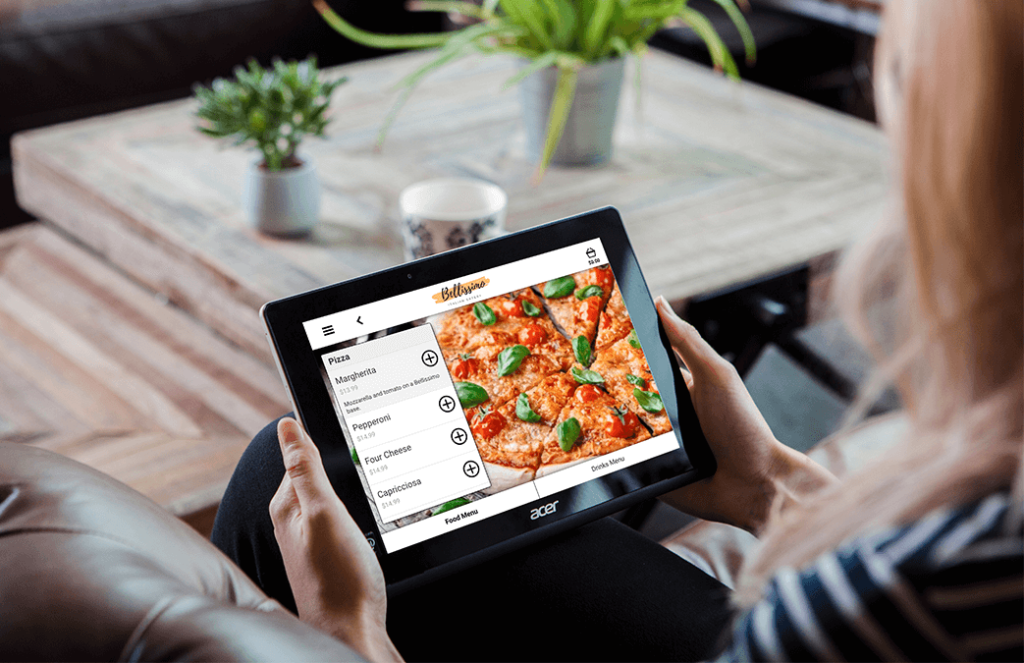[vc_row][vc_column][vc_column_text]Food allergies affect an estimated 15 million people in the U.S and are responsible for around 30,000 hospital admissions and 150-200 fatalities each year. Top allergens responsible for 90% of allergic reactions to food are, in order of prevalence: dairy, eggs, peanuts, tree nuts, fish, shellfish, wheat and soy. Allergies are on the rise worldwide, with the number of reported allergies to peanuts in children doubling between 1997-2002.
Best practice digital menu design
As there is no cure for food allergies, the only way for guests to prevent an adverse reaction and stay out of danger, is to avoid the allergens completely. This can prove particularly difficult in restaurant settings, where the safety of food-sensitive guests is threatened in instances of miscommunication amongst staff and guests, unexpected food allergens and cross-contamination during food preparation.
As operators look to increase the number of options available to guests for ordering and paying for food, more onus is placed on digital menus to provide all of the information required for guests to make informed and safe orders.
Maintaining an updated, allergen-friendly menu is a challenge in many restaurants where the menus are prone to changing often. Best practices dictate that digital menus should inform guests when food allergens or traces could be found within an item. Ideally, this should be done by calling out the food allergen(s) within the product name (see table 1), supplemented with extra information in the description and ingredients list. As standard, menus should also include a statement similar to: ‘Before placing your order, please inform your server if a person in your party has a food allergy’ so staff in the back and front of house know that extra care is to be taken and to activate the drilled procedure.
| Instead of: | Describe as: |
| Apple Slice | Apple-Walnut Slice |
| Chicken Curry | Chicken-Cashew Curry |
| Blue Cheese Dressing | Blue Cheese & Walnut Dressing |
| Pasta Pesto | Pasta Pesto (May Contain Pine Nuts) |
| Thai Noodles | Peanut Thai Noodles |
Some brands have taken great care to ensure their digital menus support guests with food allergies to make confident and informed choices.
-
McDonald’s

McDonald’s displays allergens on each food item on its digital menu using color-coded symbols. They clearly stand out and are even more prominent than the nutritional information which makes sense considering the health risks posed by the substances over hypoallergenic ingredients. Use of symbols paired with typography makes their meaning easy to understand and also supports those with poor eyesight or reading abilities, though these demographics should also be catered for via the accessibility component of menu design.
-
Chipotle
Chiptole has a section of its digital menu devoted to nutritional information and allergies and uses a table format paired with a color-coded system to indicate what food items must be avoided by intolerance.
The taco chain also incorporates a filter function into its digital menu to allow guests to filter out all options that could be harmful to them.

Other techniques not demonstrated by these brand examples include using colorful callouts, creating a front and center category for people with food sensitivities for easy navigation, and being verbally transparent about the process you take to ensure cross-contamination doesn’t occur – separate preparation areas, staff ambassadors etc.
Leverage the network
Some people with food allergies rely heavily on their respective communities to point them in the direction of safe restaurants. Forbes recently published an article listing the top apps guests use to review allergy-friendly venues. On the list are AllergyEats, Spokin and ipiitt. Not only are these networks a good point of reference for determining industry best practices, they may also support you by sending new custom your way once you’ve proven yourself to be an allergy-friendly establishment.
Why digital menus trump paper every time
Unlike wait staff, a digital menu – whether on a kiosk, mobile or tablet – will never forget to ask guests about their allergies. As alluded to above, they are generally built in a way that makes it easier for food-sensitive guests to confidently navigate through the options that are safe for them. Furthermore, if properly integrated with the point of sale and kitchen display system, there is no margin for human error when communicating between the table and the kitchen. A digital menu never forgets to tell the chef about a nut allergy.
If using a mobile app that requires a customer log-in, you will also be able to track guests’ food choices in a way that you couldn’t if they ordered through wait staff. This will flag to your CRM and marketing communications system that a particular guest has a food allergy, so you can send them personalized coupons that reflect their dietary needs or include them in targeted marketing campaigns for food sensitive guests. If opting for a digital menu that doesn’t include a guest log-in, you can still bolster customer datasets. This is because, by improving the guest experience for people with food allergies and providing them with a comfortable and secure way to order, you increase the likelihood that they will sign up for your loyalty scheme, newsletter, or download your app. For best results, ensure you ask guests to identify if they have particular dietary requirements when they sign up to your newsletter or app.
Food allergies are a serious issue in the restaurant industry, however minimizing their impact can be made easier by utilizing digital menus for ordering and payment. It’s important to note that all digital channels should be integrated with your point of sale and back of house systems to ensure that it doesn’t fall to your staff to remember to communicate information, or to food-sensitive guests to make the organization aware of items they can or cannot eat.
Once your digital menus are fully accessible for people with food allergies, you can start to consider strategically using menu features such as upsells and cross-sells to drive transaction values upwards and dramatically increase sales. Discover how to do this here. [/vc_column_text][vc_separator color=”white”][/vc_column][/vc_row][vc_row][vc_column][/vc_column][/vc_row]






